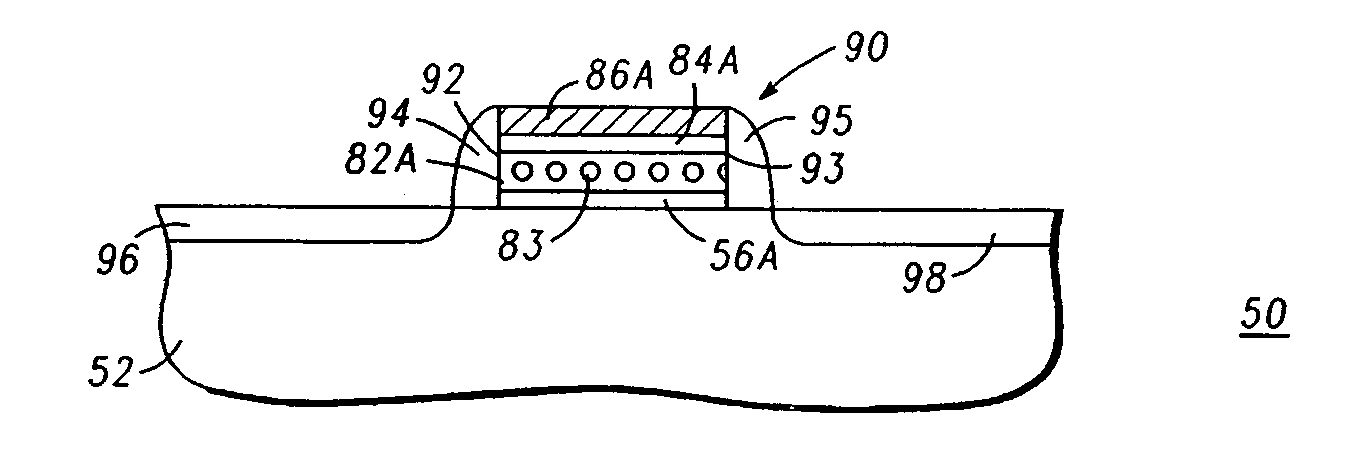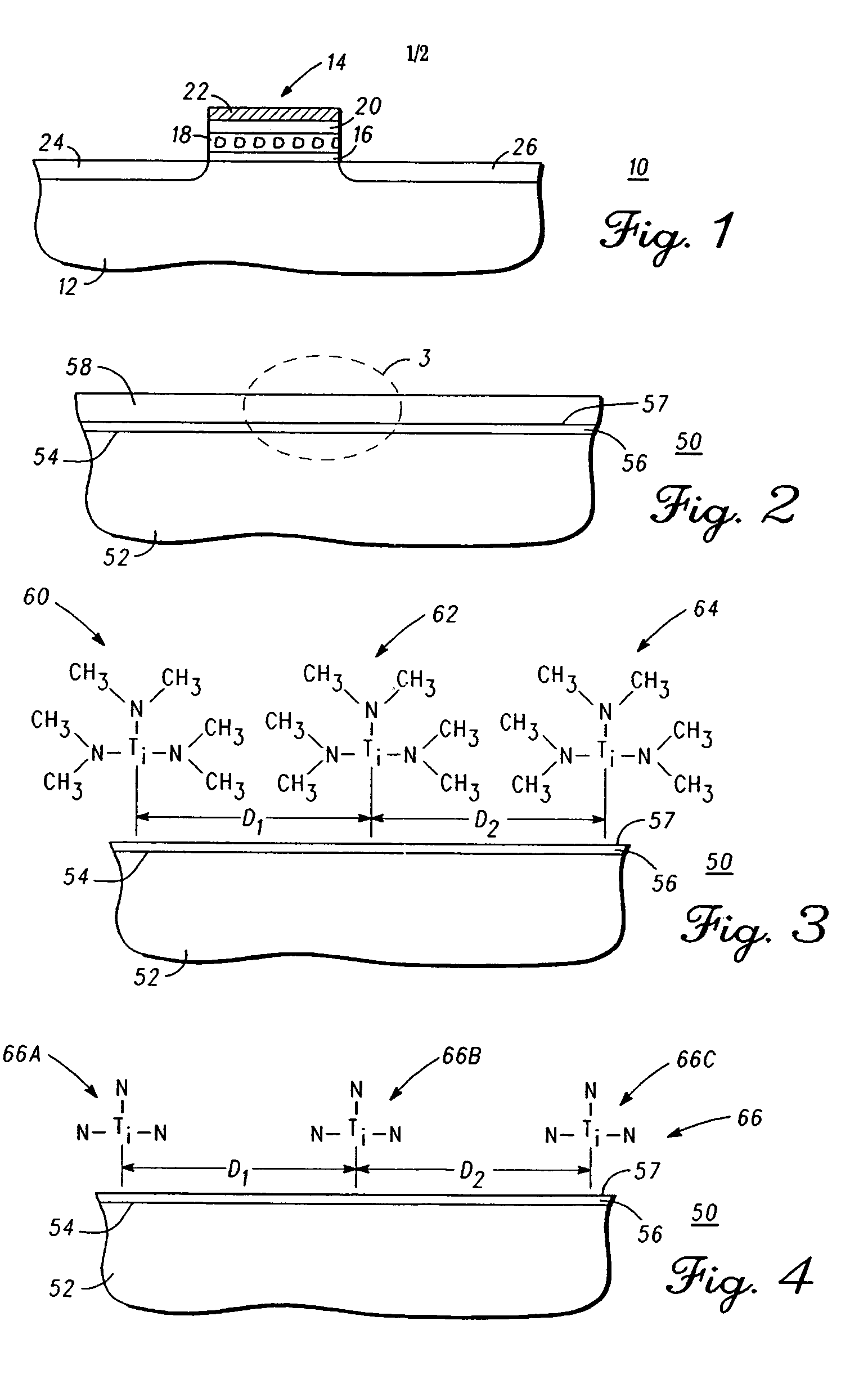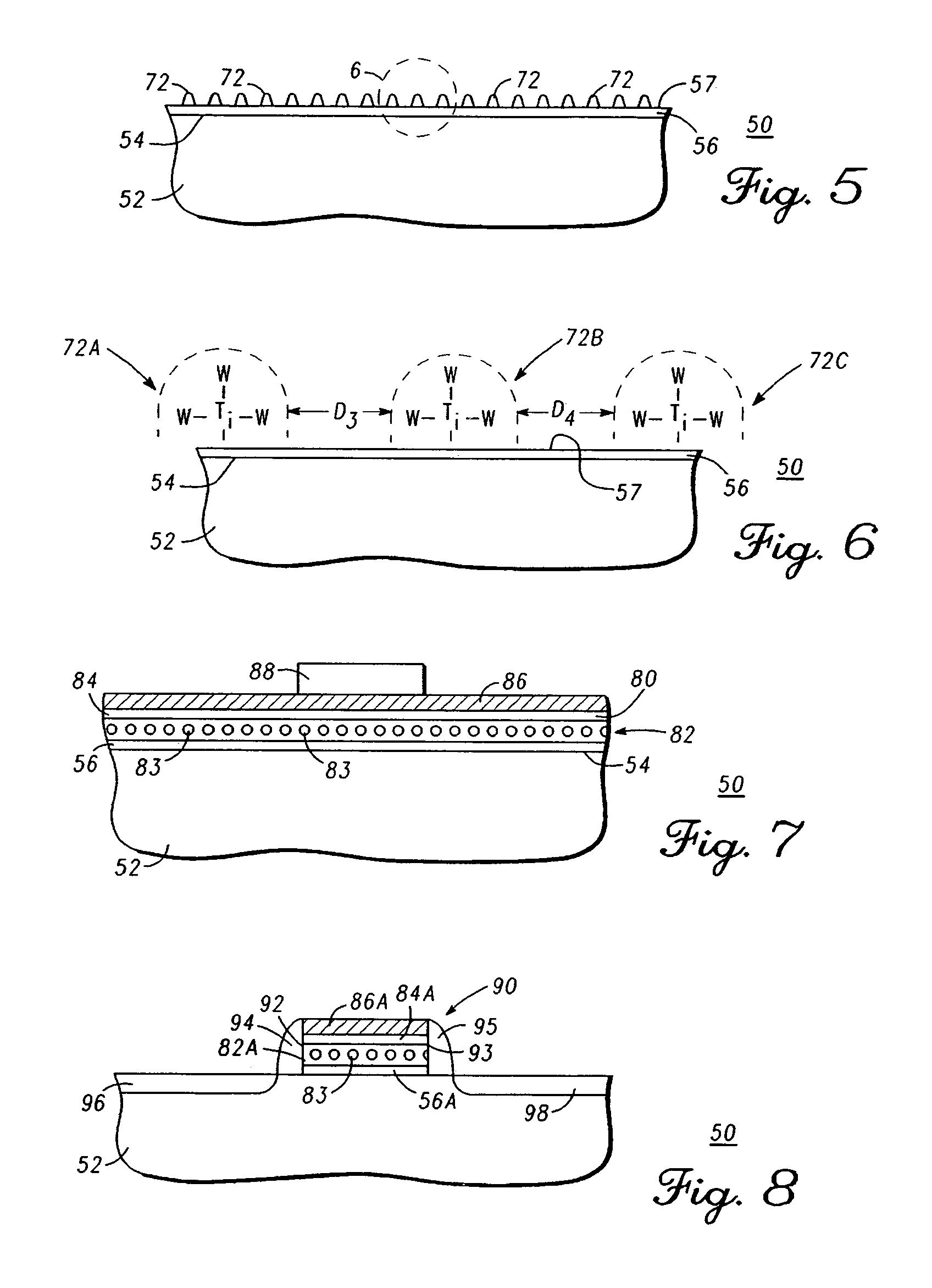Method for manufacturing a memory device having a nanocrystal charge storage region
a memory device and charge storage technology, applied in the field of memory devices, can solve the problems of degrading the charge storage capacity of the memory device, difficult to control the size distribution of the nanocrystal on the large diameter semiconductor wafer, and large variation in the size distribution of the nanocrystal
- Summary
- Abstract
- Description
- Claims
- Application Information
AI Technical Summary
Problems solved by technology
Method used
Image
Examples
Embodiment Construction
[0016]Generally, the present invention comprises a method for manufacturing a memory device having a nanocrystal charge storage region. In accordance with an embodiment of the present invention, precursor molecules bond to a dielectric substrate. The precursor molecules are comprised of a base structure or stem to which a plurality of ligands or constituent groups is bonded. The distance between adjacent base structures is governed by the size of the ligands. For example, when the precursor molecules are derived from tetrakis(dimethylamino)titanium (TDMAT), the base structure comprises a nitrogen atom bonded to a titanium atom and methyl ligands bonded to the nitrogen atom. The combination of the base structure and the methyl groups occupies a finite amount of space over the dielectric substrate and blocks other base structures and their associated methyl groups from occupying that same space. This phenomena is typically referred to as steric hindrance. The methyl groups are then st...
PUM
 Login to View More
Login to View More Abstract
Description
Claims
Application Information
 Login to View More
Login to View More - R&D
- Intellectual Property
- Life Sciences
- Materials
- Tech Scout
- Unparalleled Data Quality
- Higher Quality Content
- 60% Fewer Hallucinations
Browse by: Latest US Patents, China's latest patents, Technical Efficacy Thesaurus, Application Domain, Technology Topic, Popular Technical Reports.
© 2025 PatSnap. All rights reserved.Legal|Privacy policy|Modern Slavery Act Transparency Statement|Sitemap|About US| Contact US: help@patsnap.com



